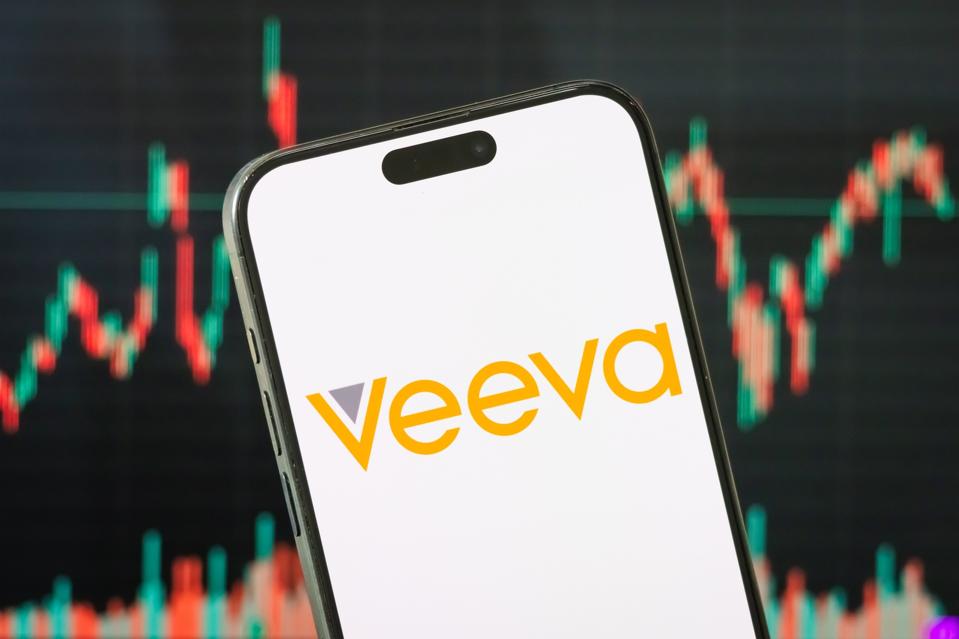Veeva Systems (NYSE: VEEV) stock, a cloud-based software firm, surged 16% in after-hours trading on May 28, following a strong performance in Q1 fiscal year 2026 (Jan. year). The company reported earnings of $1.97 per share on revenue of $759 million, surpassing consensus estimates of $1.74 and $728 million, respectively. Overall sales growth was 17% year-over-year, with subscription services revenue growing even faster at 19% to $635 million, exceeding market expectations of $616 million. This robust Q1 performance has prompted several prominent research firms to raise their price targets for VEEV stock.
While Veeva’s Q1 results were undoubtedly solid, leading to a significant jump in its stock price, the critical question now is whether VEEV stock is a buy at levels around $275. We believe VEEV appears attractive but trades at lofty valuations, making it a challenging investment at its current price of around $270. Although there’s minimal underlying concern for the stock, its extremely high current valuation makes it highly susceptible to adverse market events.
This assessment is based on a comprehensive comparison of VEEV stock’s current valuation against its recent operating performance and its historical and present financial condition. Our analysis of Veeva Systems across key parameters—Growth, Profitability, Financial Stability, and Downturn Resilience—indicates that the company demonstrates very strong operating performance and financial health. That said, if you seek upside with lower volatility than individual stocks, the Trefis High Quality portfolio presents an alternative – having outperformed the S&P 500 and generated returns exceeding 91% since its inception.
How Does Veeva Systems’ Valuation Compare to The S&P 500?
When considering the price paid per dollar of sales or profit, VEEV stock appears very expensive compared to the broader market. Veeva Systems has a price-to-sales (P/S) ratio of 16, significantly higher than the S&P 500’s figure of 3.0. Additionally, the company’s price-to-free cash flow (P/FCF) ratio stands at 41, compared to 20.5 for the S&P 500. Furthermore, its price-to-earnings (P/E) ratio is 58.1, while the benchmark’s is 26.4. These high valuation multiples can be attributed to the company’s robust profitability, discussed below.
How Have Veeva Systems’ Revenues Grown Over Recent Years?
Veeva Systems’ revenues have experienced notable growth in recent years. Its top line has grown at an average rate of 14.1% over the last three years, in contrast to a 5.5% increase for the S&P 500. Moreover, its quarterly revenues in the most recent quarter grew by 17% to $759 million, up from $650 million a year ago, outperforming the S&P 500’s 4.8% improvement. For the last twelve months period, Veeva’s revenue stood at $2.9 billion.
How Profitable Is Veeva Systems?
Veeva Systems’ profit margins are considerably higher than most companies in the Trefis coverage universe. The company’s operating income over the last four quarters was $770 million, representing a high operating margin of 27% compared to 13.2% for the S&P 500. Veeva Systems’ operating cash flow (OCF) during this period was $1.2 billion, indicating a high OCF margin of 42.2% versus 14.9% for the S&P 500. Finally, for the last four-quarter period, Veeva Systems’ net income was $781 million, pointing to a considerably high net income margin of 27.3% compared to 11.6% for the S&P 500.
Does Veeva Systems Look Financially Stable?
Veeva Systems’ balance sheet appears very strong. At the end of the most recent quarter, Veeva Systems’ debt stood at $77 million, while its market capitalization was $38 billion (as of May 28, 2025). This implies a very strong Debt-to-Equity Ratio of 0.2%, significantly lower than the S&P 500’s 19.9% (a low Debt-to-Equity Ratio is desirable). Furthermore, cash (including cash equivalents) constitutes $4.1 billion of Veeva Systems’ $7.8 billion in total assets, yielding a very strong Cash-to-Assets Ratio of 52.8% compared to 13.8% for the S&P 500.
How Resilient Is VEEV Stock During a Downturn?
VEEV stock has fared worse than the benchmark S&P 500 index during some recent downturns. While investors hope for a soft landing by the U.S. economy, it’s worth considering how severe things could become in another recession. Our dashboard, “How Low Can Stocks Go During A Market Crash,” illustrates how key stocks performed during and after the last six market crashes.
During the Inflation Shock of 2022, VEEV stock fell 55.7% from a high of $341.00 on August 5, 2021, to $151.10 on October 14, 2022, while the S&P 500 experienced a peak-to-trough decline of 25.4%. The stock has yet to recover to its pre-crisis high, with its highest point since then being $250.45 on December 8, 2024, and currently trading at around $235 (May 28).
During the Covid Pandemic in 2020, VEEV stock fell 26.8% from a high of $341.00 on August 5, 2021, to $249.49 on December 3, 2021, whereas the S&P 500 saw a peak-to-trough decline of 33.9%. Similar to the Inflation Shock, the stock has yet to recover to its pre-crisis high.
Putting All the Pieces Together: What It Means For VEEV Stock
In summary, Veeva Systems has demonstrated very strong performance across all the detailed parameters. This robust performance is reflected in the company’s expensive valuation, trading at 16 times trailing revenues and 58 times trailing earnings. While this valuation might be justifiable given Veeva’s solid profitability and its long-term outlook of doubling revenues by 2030, we believe the potential upside may be limited from current levels. Therefore, investors considering an entry into VEEV stock might find it more advantageous to await a pullback before making a purchase.
Not too happy about the volatile nature of VEEV stock? The Trefis High Quality (HQ) Portfolio, with a collection of 30 stocks, has a track record of comfortably outperforming the S&P 500 over the last 4-year period. Why is that? As a group, HQ Portfolio stocks provided better returns with less risk versus the benchmark index; less of a roller-coaster ride as evident in HQ Portfolio performance metrics.

